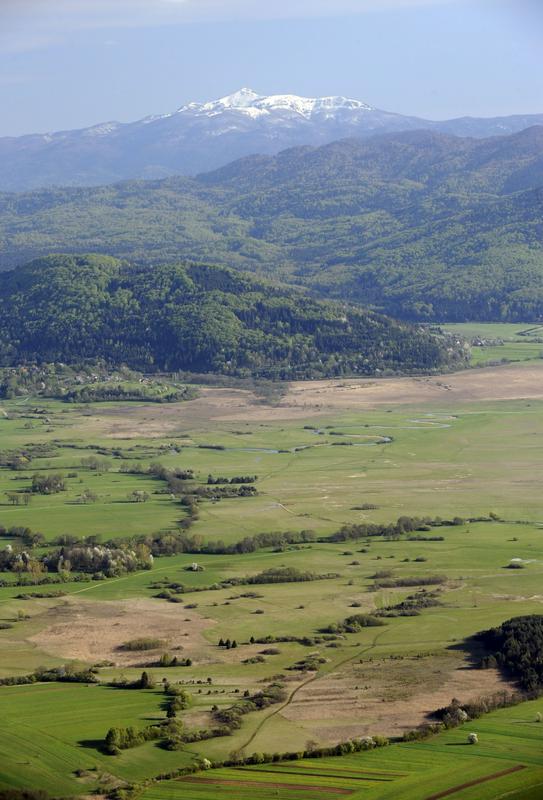
The limestone plateau rises dramatically from the Mediterranean-influenced hinterland of the Adriatic Sea. Even though the plateau itself has little surface water, it is surrounded by limestone terrain rich in sinkholes and underwater streams.
Much of the area is covered in forests, which serve as the habitat of several endangered animals. Because of the area’s remoteness from towns, the plateau was long spared from logging, and its beech forests are among the best-preserved in Slovenia. Wolves, lynx, and even bears can be spotted in the woods, while higher elevations, where vegetation is sparser, are the ideal habitat for the chamois. Several endemic flowers also thrive there, including the Carniolan primrose and Justin’s bellflower.
The top of Snežnik, which towers above above the surrounding countryside and is, with an altitude of 1796 meters, the highest Slovenian mountain outside of the Alps, has long attracted the attention of writers. The 17th century polymath Johannes Weichert Valvasor described the mountain in detail and wrote that he could see as far as Turkey – modern-day Bosnia-Herzegovina – from its summit on a clear day.
In 1964, the highest part of Snežnik became a nature reserve. A proposed regional park would greatly expand the reserve, making it one of the largest protected areas in Slovenia – and among the most diverse in terms of topography, flora, and fauna.

































































